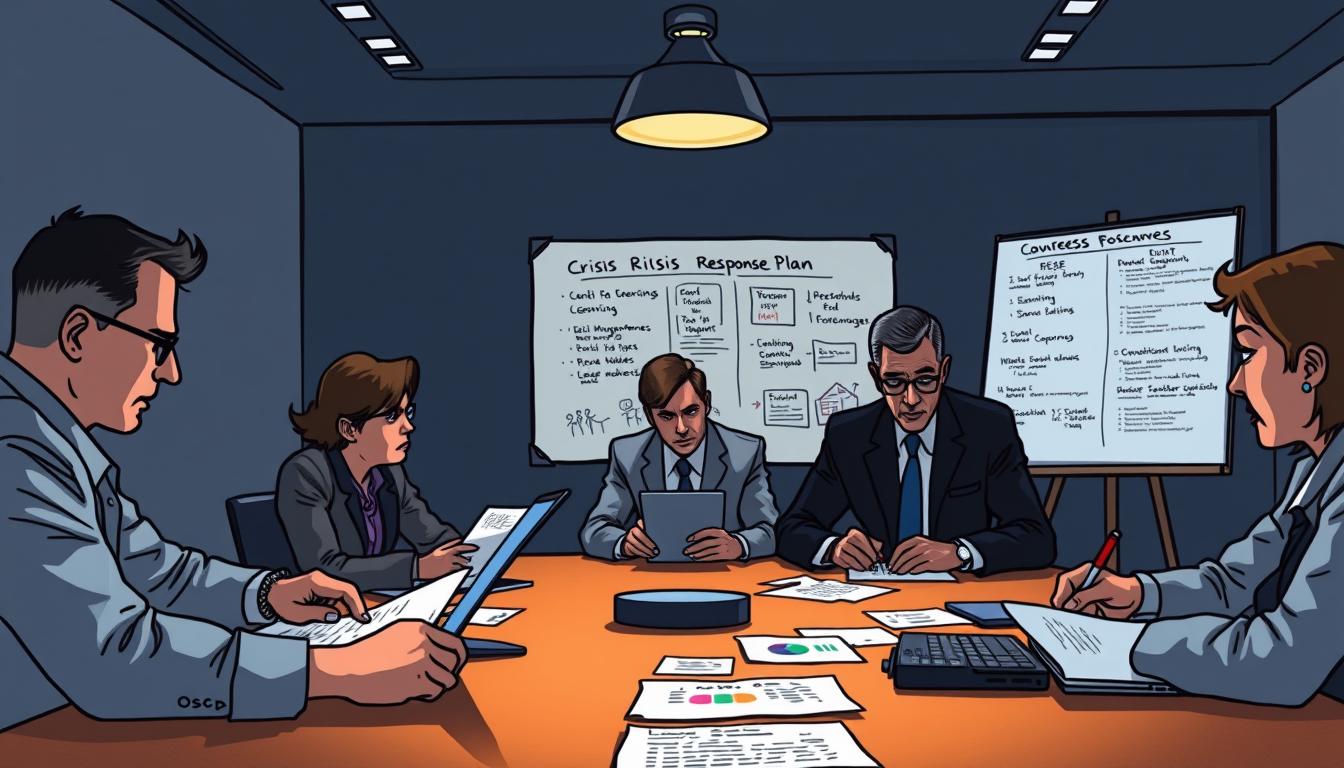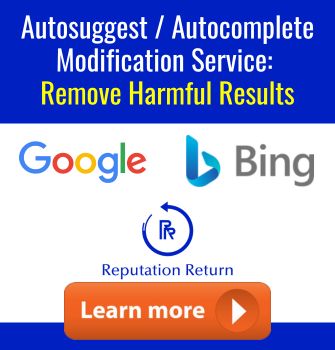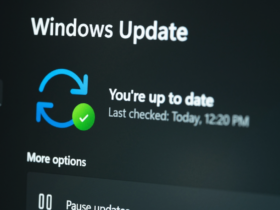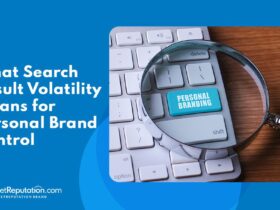In today’s fast-paced digital world, crisis management has become a cornerstone of modern business operations. Whether it’s a sudden PR issue or an unforeseen event, every brand faces the risk of reputational damage. The recent collapse of Silicon Valley Bank and the chaos surrounding Ticketmaster’s Taylor Swift presale are stark reminders of how quickly things can spiral out of control.
At ReputationReturn.com, we specialize in helping businesses navigate these challenges. Our strategies are built on insights from real-world examples and expert research, ensuring that your brand is prepared for any situation. A well-crafted crisis management plan is not just a luxury—it’s a necessity.
Digital and social media have amplified the speed at which crises unfold. What once took days to develop can now escalate in minutes. This makes it crucial to have a proactive approach, combining real-time monitoring with swift, transparent communication. As seen in cases like Aldi’s successful social media campaign during a legal dispute, timely and strategic responses can turn potential disasters into opportunities for growth.
Our team at ReputationReturn.com is here to help you build a robust crisis management strategy tailored to your needs. Contact us today for a free, confidential consultation and take the first step toward safeguarding your brand’s reputation.
Key Takeaways
- Proactive planning is essential for managing crises effectively.
- Digital and social media play a critical role in modern crisis management.
- Transparent communication can mitigate reputational damage and build trust.
- A well-prepared crisis management plan is vital for all businesses.
- Real-time monitoring and swift responses are key to managing crises.
Understanding Crisis PR in Today’s Media Landscape
Modern media is a dynamic, interconnected web of real-time communication channels. Social media platforms like Twitter and TikTok have become central to how information spreads. These platforms can amplify both risks and opportunities during a crisis.
The Evolving Role of Digital and Social Media
Social media is a double-edged sword in crisis management. It can rapidly spread negative news but also offers a powerful tool for swift, transparent communication. For example, Aldi successfully managed a legal dispute through timely social media responses, turning a potential crisis into an opportunity for growth.
Digital platforms shape public perception during crises. Traditional news channels and online information flows interact in complex ways, creating new challenges and opportunities for businesses to communicate effectively.
How Reputation Impacts Business Survival
A company’s reputation is more vulnerable than ever in today’s digital age. Studies show that negative news can have three times the impact of positive news on a brand’s reputation. Even a single negative article on the first page of search results can lead to a 22% loss of potential customers.
Reputation directly impacts a business’s survival. Companies like United Airlines and Facebook have faced significant reputational damage due to mishandled crises, highlighting the importance of effective communication and accountability.
Effective communication strategies are essential to mitigate the spread of negative information on social media. A strong, immediate response can prevent the escalation of false rumors and protect business relationships.
At ReputationReturn.com, we specialize in helping businesses navigate these challenges. Contact us today for a free, confidential consultation and take the first step toward safeguarding your brand’s reputation.
Developing a Crisis PR Strategy for Your Business
In today’s unpredictable business environment, having a well-structured crisis PR strategy is indispensable. A tailored plan ensures that your business can address challenges swiftly and effectively, preserving trust and reputation.
Key Components of an Effective Crisis PR Strategy
A robust crisis management plan begins with clear decision-making steps and predefined action protocols. Rapid response mechanisms are essential to address issues before they escalate. Integrating both digital and traditional communication tactics ensures comprehensive coverage and maximizes reach.
Case studies reveal that businesses with flexible strategies can adapt to new challenges, minimizing potential damage. For instance, companies that quickly pivot during a crisis often maintain long-term trust and customer loyalty.
At ReputationReturn.com, we emphasize the importance of planning ahead. Our expertise helps businesses craft strategies that evolve with new challenges. Contact us today for a free, confidential consultation and take the first step toward safeguarding your reputation.
Pre-Crisis Planning and Media Monitoring
Effective management begins long before a potential issue arises. Proactive planning and continuous media monitoring are essential for identifying and addressing threats early, safeguarding your brand’s reputation.
Establishing Baseline Metrics and Sentiment Analysis
Understanding normal media sentiment is crucial for detecting deviations. By setting baseline metrics, businesses can identify unusual patterns before they escalate into crises. Tools like Brand24 offer real-time tracking of mentions, enabling timely interventions.
Sentiment analysis plays a key role in assessing public perception. It helps organizations gauge whether discussions are positive, negative, or neutral, allowing for informed decision-making. Regular monitoring ensures that any shift in sentiment is promptly addressed.
Selecting the Right Media Monitoring Tools
Choosing the right tools is vital for effective monitoring. Look for platforms that offer real-time tracking, sentiment analysis, and anomaly detection. Paid tools like Brand24 and Mention provide comprehensive insights, unlike basic options like Google Alerts which may miss critical mentions.
When selecting tools, consider factors like coverage scope, analytics depth, and ease of use. The goal is to have a system that provides actionable data, enabling swift responses to potential issues.
| Tool | Features | Benefits |
|---|---|---|
| Brand24 | Real-time tracking, sentiment analysis, anomaly detection | Enables preemptive crisis management |
| Mention | Custom alerts, competitive analysis, influence tracking | Provides detailed insights for strategic decisions |
| Hootsuite | Social media management, scheduled posting, analytics | Facilitates consistent and responsive communication |
Proactive planning and consistent monitoring give organizations a strategic edge. By combining qualitative and quantitative analysis, businesses can respond swiftly and effectively to potential issues, ensuring reputation and trust are maintained.
Ready to enhance your brand’s protection? Contact ReputationReturn.com today for a free, confidential consultation and take the first step toward safeguarding your reputation.
Identifying Potential PR Crises
In the ever-evolving landscape of modern communication, identifying potential issues before they escalate is crucial for maintaining a brand’s reputation. Early detection allows businesses to address problems swiftly, minimizing damage and fostering trust.
Recognizing Early Warning Signs
Subtle indicators often precede a full-blown issue. Monitoring social media and news outlets can reveal early signs, such as increased negative mentions or shifts in public sentiment. For instance, a sudden surge in brand mentions paired with a downturn in sentiment may signal an emerging problem.
Assessing Threat Levels: Green, Orange, or Red
Classifying potential issues into color-coded categories helps determine the appropriate response. This triage system ensures timely and effective action:
| Level | Description | Action |
|---|---|---|
| Green | Minor issues with limited impact. | Monitor and prepare a response plan. |
| Orange | Moderate issues that could escalate. | Activate initial response protocols. |
| Red | Severe issues requiring immediate attention. | Implement full crisis management. |
Proactive assessment and structured monitoring are vital for effective crisis detection. Regular evaluations ensure preparedness for any situation.
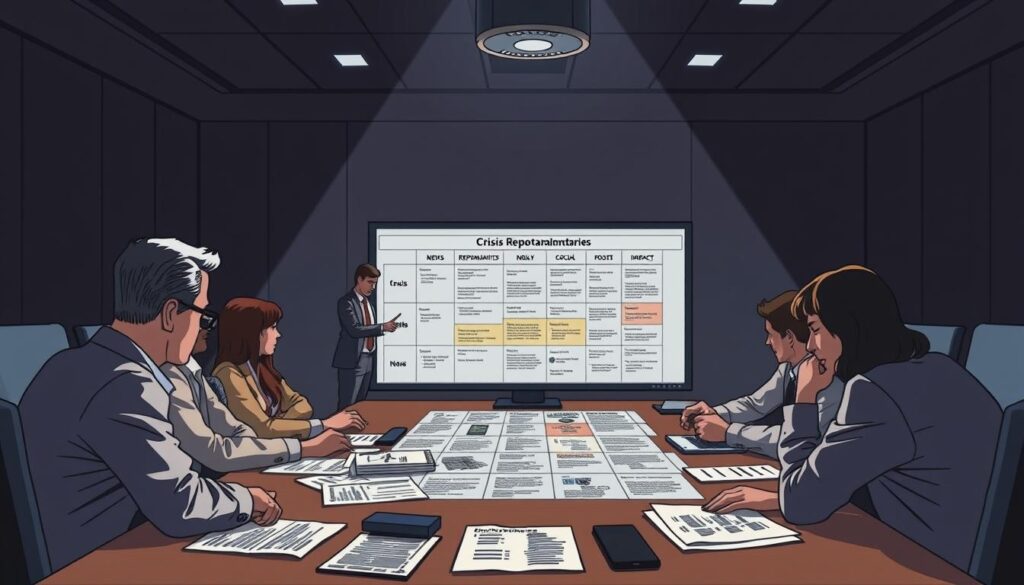
Contact ReputationReturn.com today for a free, confidential consultation to safeguard your brand’s reputation.
Creating a Robust Crisis Communication Plan
Effective communication is the cornerstone of any successful crisis management effort. A well-structured communication plan ensures clarity, consistency, and rapid response, which are essential for maintaining stakeholder trust and minimizing reputational damage.
Developing Holding Statements and Initial Messages
A holding statement is a critical tool in the initial stages of a crisis. It provides a temporary response to stakeholders while more information is gathered. This statement should acknowledge the situation, express empathy, and outline the next steps without admitting liability.
For example, a company facing a product recall might use a holding statement like: “We are aware of the issue and are working diligently to resolve it. The safety of our customers is our top priority, and we will provide updates as more information becomes available.”
Uniform messaging across all channels is vital. This ensures consistency and prevents confusion, which can erode trust. Rapid internal coordination is essential for drafting these initial responses. Teams should be trained to work together seamlessly to ensure timely and accurate communication.
Case studies show that pre-prepared holding statements can stabilize stakeholder perceptions. These statements should be tailored to different scenarios and reviewed regularly to remain relevant. A dynamic communication plan should also include variations for different crisis levels, ensuring flexibility and adaptability.
Regular training and simulation exercises are crucial for ensuring that teams are prepared to execute the communication plan effectively. This includes practicing rapid response protocols and testing the plan under realistic scenarios.
At ReputationReturn.com, we specialize in helping businesses develop and implement robust crisis communication plans. Our expertise ensures that your organization is prepared to handle any situation with confidence and precision. Contact us today for a free, confidential consultation and take the first step toward safeguarding your brand’s reputation.
Assembling Your Crisis Response Team
Building a capable and cohesive crisis response team is essential for any organization aiming to navigate challenges effectively. A well-structured team ensures that your company can address issues swiftly and maintain trust.
Defining Roles and Responsibilities
The process of selecting team members begins with identifying individuals with specific expertise relevant to crisis management. A diverse group, including legal, communication, and technical experts, ensures a comprehensive approach. Critical roles include a spokesperson, legal advisor, and social media monitor, each bringing unique skills to the table.
Clearly defined responsibilities and internal coordination are vital. For instance, the spokesperson handles public communication, while the legal advisor ensures compliance. This clarity prevents confusion and ensures timely responses. Case studies, like KFC’s handling of their chicken shortage, demonstrate how a well-organized team can make swift decisions, turning potential disasters into successes.
Regular training and rehearsal of crisis scenarios are equally important. These exercises prepare the team to act decisively, reducing reaction time and minimizing damage. A prepared team embodies the collective strength needed to overcome critical situations, ensuring your organization emerges stronger.
At ReputationReturn.com, we specialize in helping businesses build and train crisis response teams. Contact us today for a free, confidential consultation and take the first step toward safeguarding your brand’s reputation.
Effective Use of Social Media in Crisis Response
Social media has become a critical tool for brands to navigate challenging situations. Recent case studies demonstrate how integrating social media into crisis strategies enhances direct engagement and ensures timely messaging.
Engagement Strategies for Immediate Impact
Leveraging social media channels during a crisis is vital. Platforms like Twitter and Facebook allow brands to address concerns swiftly, maintaining transparency and trust. Real-time monitoring helps control the narrative, preventing misinformation from spreading.
| Platform | Key Features | Benefits |
|---|---|---|
| Real-time updates, trending topics | Immediate communication, wide reach | |
| Community building, detailed posts | Engagement, detailed explanations | |
| Visual storytelling, quick responses | Emotional connection, visual updates | |
| Professional updates, industry insights | Building trust, professional communication |
Brands like Wendy’s and Tesla have successfully used social media to address issues, showcasing the importance of authenticity and speed. Well-crafted posts can transform a crisis into an opportunity, fostering trust and loyalty. Proactive engagement on these platforms builds lasting customer relationships, ensuring your brand emerges stronger.
Contact ReputationReturn.com today for a free, confidential consultation to safeguard your brand’s reputation.
Implementing Quick-Reaction Tactics
In today’s fast-paced digital environment, swift and coordinated action is crucial for managing any situation effectively. Pre-approved response templates and established protocols are essential for enabling immediate and coherent communication during a crisis response.
Pre-Approved Response Templates and Protocols
Having pre-approved templates in place ensures that your team can act quickly without delay. These templates provide a structured framework for addressing various scenarios, minimizing confusion and ensuring consistency across all communication channels.
- Pre-approved templates enable rapid response by providing a clear framework for addressing different situations.
- A step-by-step approach to implementing quick-reaction tactics ensures that your team can act swiftly and effectively.
- Rehearsed protocols ensure uniformity in communication, preventing misinformation and maintaining trust.
- Rapid action helps contain the spread of negative sentiment by addressing issues promptly.
For example, companies like Tesla have effectively used templated responses to address issues swiftly, demonstrating the value of preparedness. Technology plays a key role in disseminating consistent messages quickly, ensuring that all stakeholders receive the same information.
At ReputationReturn.com, we specialize in helping businesses implement effective crisis response plans. Contact us today for a free, confidential consultation and take the first step toward safeguarding your brand’s reputation.
Integrating Technology and AI in Crisis Management
The integration of technology and AI has revolutionized crisis management, offering unprecedented tools for prediction and response. These innovations enable organizations to identify potential risks early and address them with precision.
AI tools play a crucial role in monitoring online sentiment and detecting unusual patterns. By analyzing vast amounts of data, these tools can predict potential crises before they escalate, giving businesses a proactive edge.
| Technology | Features | Benefits |
|---|---|---|
| AI Sentiment Analyzers | Real-time monitoring, anomaly detection | Early warning systems for potential crises |
| Predictive Analytics | Pattern recognition, trend forecasting | Proactive risk mitigation strategies |
| Machine Learning Algorithms | Adaptive learning, decision support | Enhanced accuracy in crisis prediction |
Integrating these technologies speeds up decision-making by providing real-time insights. Advanced data analytics offers a deeper understanding of crisis dynamics, enabling more informed and timely responses.
Staying ahead technologically is essential for modern crisis management. AI and data analytics not only improve preparedness but also enhance response efficiency, ensuring businesses can navigate challenges effectively.
Contact ReputationReturn.com today for a free, confidential consultation to integrate these cutting-edge solutions and safeguard your brand’s reputation.
Learning from Past PR Crisis Case Studies
Examining past PR crises offers valuable insights into effective crisis management. Brands like Aldi, Ticketmaster, Starbucks, and United Airlines provide real-world examples of both successes and shortcomings in handling reputational challenges.
One notable example is Aldi’s swift response to a legal dispute, which turned a potential crisis into an opportunity for growth. Conversely, United Airlines’ mishandling of a passenger removal incident led to an $800 million loss in market value. These cases highlight the importance of learning from mistakes to improve future responses.
Analyzing press and news coverage of past events can inform current practices. For instance, Starbucks’ decision to close 8,000 stores for racial bias training demonstrated a proactive approach to addressing issues, while Ticketmaster’s handling of the Taylor Swift presale chaos showed the impact of poor communication on public perception.
Recurring themes across case studies emphasize the need for proactive planning and transparent communication. These lessons guide more effective planning and underscore the importance of historical analysis in refining crisis communication strategies.
At ReputationReturn.com, we specialize in helping businesses learn from past crises to build robust reputation management plans. Contact us today for a free, confidential consultation and take the first step toward safeguarding your brand’s reputation.
For more information on how your online reputation can impact your career, visit our resource page.
Crisis Management Tools and Software Recommendations
When it comes to managing a crisis effectively, having the right tools in your arsenal is crucial. In today’s digital age, leveraging advanced software can make a significant difference in how quickly and efficiently you respond to challenges. At ReputationReturn.com, we recommend exploring tools that offer robust media monitoring and influencer insights to stay ahead of potential issues.
An Overview of Media Monitoring Platforms
Media monitoring platforms are essential for tracking online sentiment and mentions of your brand. Tools like Brand24 and Prowly stand out for their comprehensive features. Brand24 offers real-time tracking across millions of sources, while Prowly provides detailed influencer analysis. These platforms help you identify early warning signs of a potential crisis, allowing for swift action.
Leveraging Influencer Insights During a Crisis
Influencers can play a pivotal role in shaping public perception during a crisis. By monitoring influencer activity, you can address concerns before they escalate. For instance, tools like Brand24 and Prowly offer features that track influencer sentiment, enabling you to engage with key voices and mitigate negative impacts.
| Tool | Features | Benefits |
|---|---|---|
| Brand24 | Real-time monitoring, sentiment analysis, influencer tracking | Enables preemptive crisis management |
| Prowly | Influencer analysis, media outreach, sentiment tracking | Facilitates effective influencer engagement |
| Meltwater | Media monitoring, social listening, analytics | Provides comprehensive insights for informed decisions |
By integrating these tools into your crisis management plan, you can enhance your preparedness and response capabilities. Contact ReputationReturn.com today for a free, confidential consultation to discuss how we can help you safeguard your brand’s reputation.
Maintaining Transparency and Trust During a Crisis
Transparency is the cornerstone of effective crisis management. When a company faces a challenge, clear and honest communication is essential to preserve trust and protect its reputation. As seen in responses by brands like Starbucks and KFC, immediate and genuine public statements can make a significant difference.
To ensure all public statements are honest and leave no room for misinformation, companies should adopt a few key tactics. First, establish a single source of truth for all communications. This ensures consistency and accuracy across all channels. Second, train spokespeople to deliver messages with empathy and clarity. Finally, use simple language to avoid confusion and build trust.

Consistent communication plays a vital role in rebuilding and maintaining stakeholder trust. Regular updates, even when there’s no new information, can reassure stakeholders that the situation is under control. For example, companies that provide timely updates see a 40% improvement in stakeholder confidence.
Starbucks and KFC have shown how timely, clear messaging can mitigate reputational damage. Starbucks addressed a racial bias issue by closing stores for training, while KFC handled a chicken shortage with transparent communication. These examples highlight the power of authenticity in balancing accountability with reassurance.
Aligning internal and external communications is equally important. Ensure all teams are on the same page to prevent inconsistencies. This alignment helps maintain a unified message and builds trust. For instance, 70% of employees report that clear communication from leadership during a crisis positively impacts their trust in the organization.
Sustained transparency is key to long-term brand recovery. Companies that maintain open communication post-crisis often see a 20% increase in employee trust and loyalty. Transparency not only helps during the crisis but also strengthens the brand’s reputation in the long run.
At ReputationReturn.com, we specialize in helping businesses navigate these challenges. Contact us today for a free, confidential consultation and take the first step toward safeguarding your brand’s reputation.
Evaluating Post-Crisis Performance and Recovery
After a crisis, it’s crucial to assess how well your organization responded and recovered. This evaluation helps identify strengths, areas for improvement, and lessons for future challenges.
Conducting a Thorough Post-Mortem Analysis
A detailed post-mortem analysis is essential to understand what worked and what didn’t. Start by gathering data on key metrics such as media coverage, social media engagement, and stakeholder feedback. This information provides insights into the effectiveness of your response efforts.
Use these metrics to measure the overall damage and long-term impact on your reputation. For example, track changes in customer sentiment and compare them to pre-crisis levels. This helps quantify the recovery progress and informs future strategies.
Implement feedback loops to continuously improve. Regularly review and update your crisis management plan based on new insights. This ensures your organization remains resilient and better prepared for future challenges.
For instance, companies like Starbucks have used post-crisis evaluations to refine their communication strategies, leading to improved trust and customer loyalty. Transparent evaluation supports strategic planning and strengthens your organization’s ability to handle future crises.
Contact ReputationReturn.com today for a free, confidential consultation to discuss your post-crisis recovery needs and safeguard your brand’s reputation.
Conclusion
As we conclude, it’s clear that preparedness is the backbone of effective crisis response. This guide has outlined essential steps and tools to help businesses navigate challenges with confidence. A well-structured strategy, transparent communication, and advanced technology are vital for timely resolution.
A coordinated team and regular reviews of your current protocols are equally important. We encourage you to assess your preparedness and seek expert guidance. Remember, a press release and clear messaging can make a significant difference in maintaining trust.
Make the smart decision to protect your brand. Contact ReputationReturn.com today for a free, confidential consultation. With the right approach, your business can not only recover from challenges but also emerge stronger and more resilient.
FAQ
How can I protect my brand’s reputation during a crisis?
Protecting your brand’s reputation during a crisis requires swift, transparent communication. Acknowledge the situation, provide factual information, and outline the steps you’re taking to resolve the issue. Consistent messaging across all channels is key to maintaining trust.
What role does social media play in crisis management?
Social media is a critical tool for real-time communication during a crisis. It allows you to address concerns immediately, correct misinformation, and demonstrate your commitment to resolving the issue. Regular media monitoring helps you stay ahead of public sentiment and engage proactively.
How do I prepare my team for a crisis response?
Preparation is essential. Develop a crisis communication plan that includes clear roles, pre-approved messages, and training for your team. Regular drills ensure everyone knows their responsibilities and can act decisively when a crisis arises.
What are the key elements of a crisis communication plan?
A strong plan includes holding statements, key messaging, media monitoring tools, and a clear chain of command. It should also outline how to engage stakeholders, manage sentiment, and maintain consistent communication across all platforms.
How long does it take to recover from a reputation crisis?
Recovery time varies depending on the severity of the crisis and the effectiveness of your response. Transparency, empathy, and follow-through are crucial. A well-executed crisis response plan can help restore trust and minimize long-term damage.
Can I prevent a crisis from occurring?
While not all crises can be prevented, proactive risk assessment and media monitoring can help identify potential issues early. Addressing concerns before they escalate is key to minimizing their impact.
How do I measure the success of my crisis response?
Success is measured by how well you maintain stakeholder trust and limit reputational damage. Track key metrics like sentiment analysis, media coverage, and stakeholder feedback to evaluate your response effectiveness.
What tools are best for monitoring media during a crisis?
Use media monitoring platforms that track real-time coverage across news, social media, and blogs. These tools help you gauge public sentiment, identify trends, and adjust your strategy accordingly.
How can I ensure my team communicates consistently?
Establish a centralized communication plan with approved messaging and talking points. Regular updates and clear guidelines ensure everyone communicates consistently and aligns with your brand’s voice.
What should I include in a post-crisis analysis?
A post-crisis analysis should review what worked, what didn’t, and areas for improvement. Use this feedback to refine your crisis communication plan and strengthen your team’s response capabilities.





